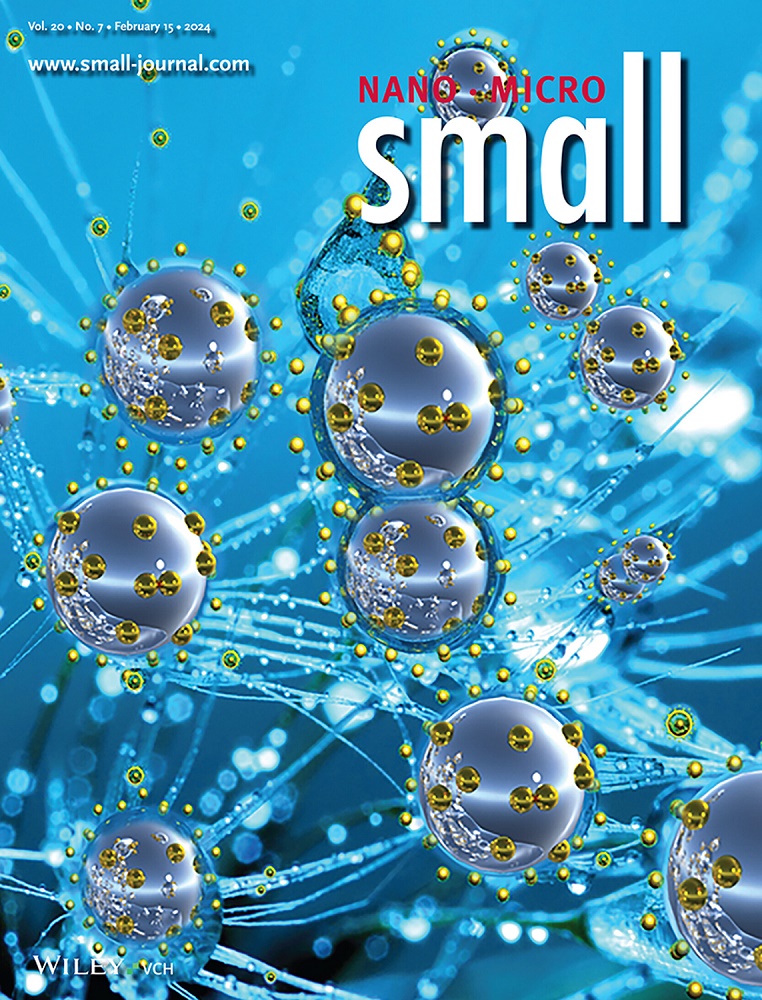利用高浓度Zn2+/K+混合电解质提高小醌类有机电极的电化学性能
IF 13
2区 材料科学
Q1 CHEMISTRY, MULTIDISCIPLINARY
引用次数: 0
摘要
小醌基有机电极受到了广泛的关注。然而,小醌电极在电解液中的快速溶解阻碍了其实际应用。例如,蒽醌(AQ)和菲蒽醌(PQ)分子由于电化学性能较差而很少被报道用于水性电池。本文将含有1m Zn(OTF)2和15m KOTF盐的高浓度杂化电解质引入小醌电极,研究了PQ和AQ电极在Zn2+/K+杂化电解质中的氧化还原行为。这些发现表明,对位羰基的AQ选择性地储存质子而不是K+,而邻位羰基的PQ同时储存质子和K+,但没有选择性。此外,锌(OTF)2盐同时作为质子缓冲剂和结合剂,提高了循环稳定性。因此,当PQ与Zn金属阳极配对用于Zn || PQ电池时,添加钾盐可以提高Zn电池的能量密度。此外,当PQ与普鲁士蓝阴极配对组装水性K离子电池时,在电解质中添加锌盐可以通过将放电的PQ分子与二价离子结合来提高循环稳定性。本研究为解决PQ电极在水溶液电池中所面临的挑战提供了一种电解质工程策略。本文章由计算机程序翻译,如有差异,请以英文原文为准。
Enhancing the Electrochemical Performance of Small Quinone Organic Electrode via High‐Concentration Zn2+/K+ Hybrid Electrolyte for Aqueous Batteries
Small Quinone‐based Organic Electrodes have received extensive attention. However, the rapid dissolution of small quinone electrode into electrolyte impede their practical applications. For example, Anthraquinone (AQ) and Phenanthrenequinone (PQ) molecules have been rarely reported for aqueous batteries due to the inferior electrochemical performance. Herein, a high‐concentration hybrid electrolyte containing 1m Zn(OTF)2 and 15m KOTF salts is introduced for small quinone electrode and investigate the redox behavior of PQ and AQ electrode is investigated in Zn2+ /K+ hybrid electrolyte. These findings reveal that AQ with carbonyl groups at para‐position selectively stores proton rather than K+ , while PQ with carbonyl group at ortho‐position simultaneously stores proton and K+ without selectivity. Moreover, the Zn(OTF)2 salt serves as both proton buffer and binder to improve the cycle stability. Consequently, when PQ is paired with Zn metal anode for Zn || PQ batteries, the addition of potassium salt can improve the energy density of the Zn batteries. Moreover, when PQ is paired with Prussian blue cathode to assemble aqueous K‐ion batteries, the addition of zinc salt in the electrolyte can improve the cycle stability via binding discharged PQ molecules with divalent‐ions. This research provides an electrolyte engineering strategy to address the challenges facing PQ electrode for aqueous batteries.
求助全文
通过发布文献求助,成功后即可免费获取论文全文。
去求助
来源期刊

Small
工程技术-材料科学:综合
CiteScore
17.70
自引率
3.80%
发文量
1830
审稿时长
2.1 months
期刊介绍:
Small serves as an exceptional platform for both experimental and theoretical studies in fundamental and applied interdisciplinary research at the nano- and microscale. The journal offers a compelling mix of peer-reviewed Research Articles, Reviews, Perspectives, and Comments.
With a remarkable 2022 Journal Impact Factor of 13.3 (Journal Citation Reports from Clarivate Analytics, 2023), Small remains among the top multidisciplinary journals, covering a wide range of topics at the interface of materials science, chemistry, physics, engineering, medicine, and biology.
Small's readership includes biochemists, biologists, biomedical scientists, chemists, engineers, information technologists, materials scientists, physicists, and theoreticians alike.
 求助内容:
求助内容: 应助结果提醒方式:
应助结果提醒方式:


